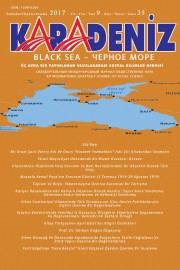ERKEN CUMHURİYET DÖNEMİNDE TÜRK SİNEMASININ ULUS-DEVLET POLİTİKALARIYLA İLİŞKİSİ ÜZERİNE BİR DEĞERLENDİRME
AN EVALUATION ON THE RELATIONSHIP BETWEEN THE TURKISH CINEMA AND THE NATION-STATE POLICIES DURING THE EARLY REPUBLICAN PERIOD
Author(s): Ali Haydar Soysüren, Necip YıldızSubject(s): Gender Studies, Nationalism Studies, 19th Century, Pre-WW I & WW I (1900 -1919), Interwar Period (1920 - 1939), Film / Cinema / Cinematography
Published by: Kültür Ajans Tanıtım ve Organizasyon
Keywords: Early Republican Period; Statism; Private Sector; Cinema; Becoming a Nation; Cultural Revolution; Secularism;
Summary/Abstract: While cinema which entered Turkey in 1890s was an area in which the minorities showed interest, it is observed that the state and the Muslims started to enter into this area specially since the WWI. The cinema which started as a military-centered activity during the WWI, continued under the dominance of the private sector during the Republican period. Although the private sector produced films on the Republican values and the republican foundation process, it is observed that the State did not use the cinema as a direct means to establish the new regime. It is remarkable that the Republican administration, which turned from the empire to the nation-state at a time when cinema had a world-wide appeal and the coupling of audio and vision had an important effect on the masses, left this area weak. It is observed that the State’s attitude towards the cinema sector during the 1920s continued during the 1930s, when a protectionist-statist model started to be established. It can be seen that the national cinema, to which the state did not directly intervene and which was under the initiative of a weak private sector, could not become an active actor in the sector dominated by the foreign cinema. The tension which is created by this situation that worked against the national cinema, can be traced through the nationalist reactions reflected in the Cumhuriyet newspaper and the Sinema magazine of 1930, which we focused upon. The use of French subtitles in foreign films presented to the public as well as the smallness of the type size of the Turkish letters used, are met with a nationalist reflex by the critics. Nonetheless, it can be argued that cinema provided an indirect and passive, if not a direct, support to the regime via modern life style and male-female relationships.
Journal: Karadeniz Uluslararası Bilimsel Dergi
- Issue Year: 2017
- Issue No: 35
- Page Range: 95-110
- Page Count: 16
- Language: Turkish

